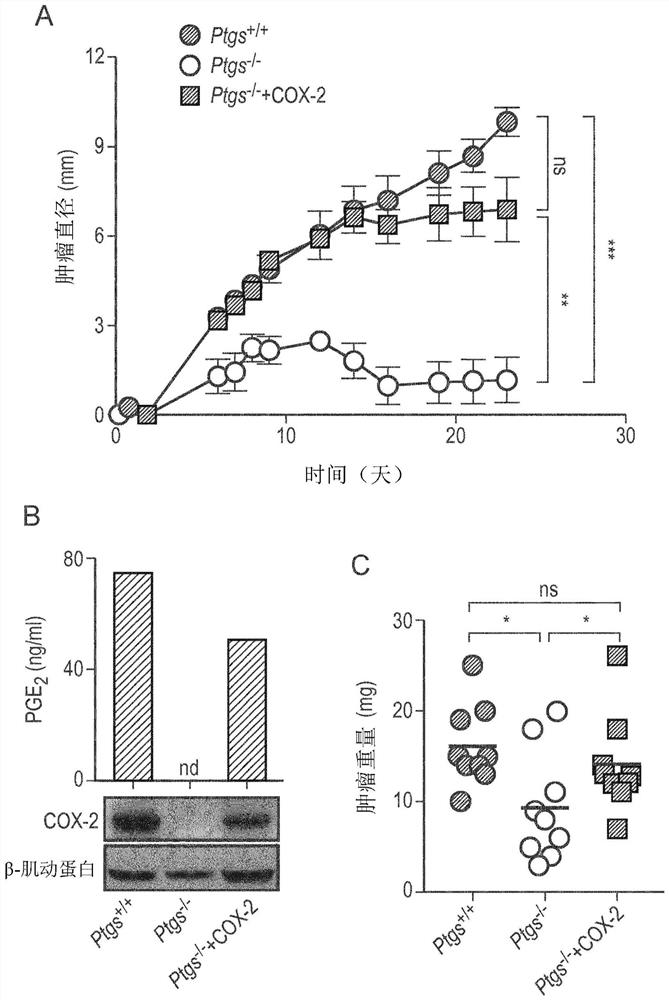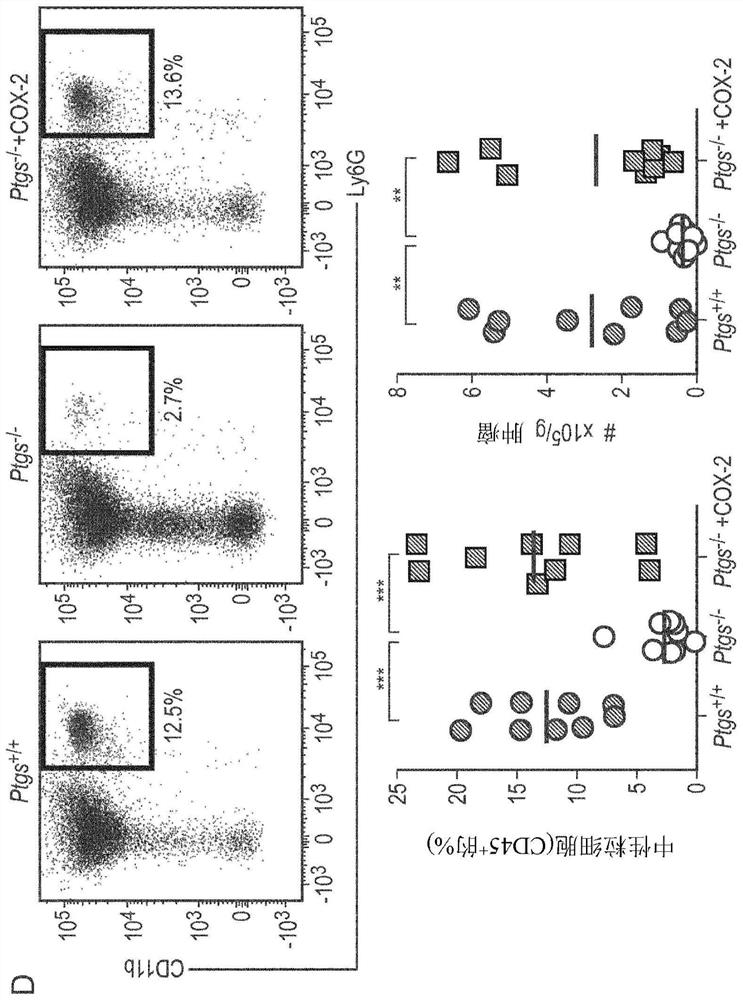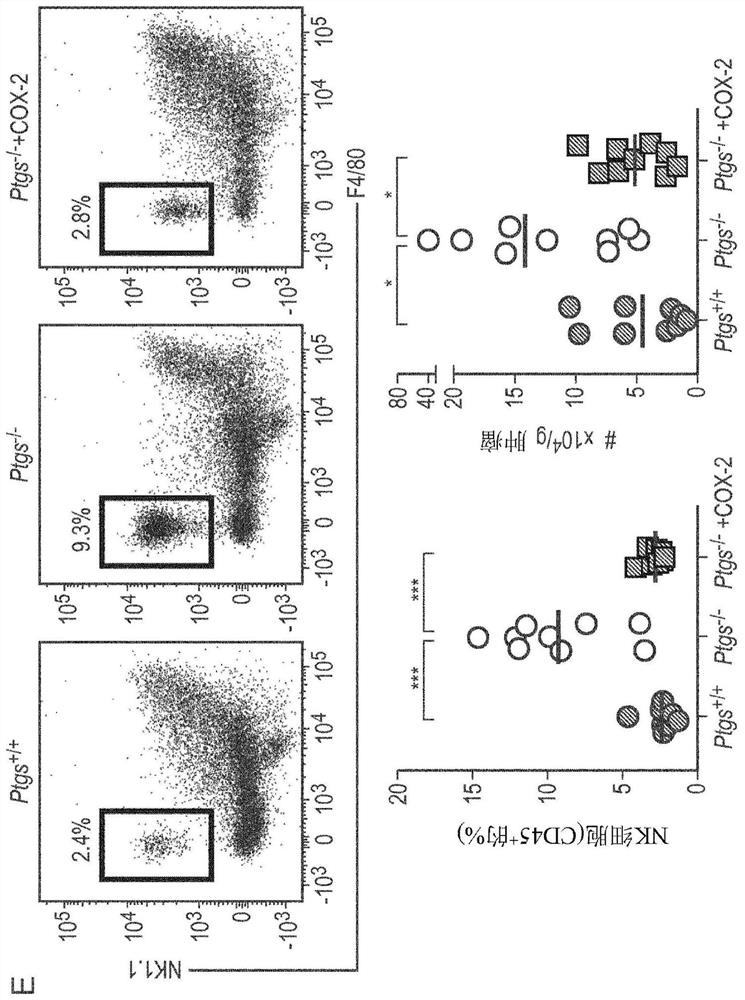Prognostic and treatment response predictive method
A treatment response and immunotherapy technology, applied in chemical instruments and methods, biochemical equipment and methods, pharmaceutical formulations, etc., can solve the problems that other models of cancer patients' treatment response do not meet
- Summary
- Abstract
- Description
- Claims
- Application Information
AI Technical Summary
Problems solved by technology
Method used
Image
Examples
Embodiment 1
[0169] Example 1 - Neutropenia and increased NK cell accumulation in tumors formed by COX-deficient cells
[0170] As previously reported (Zelenay et al., 2015), COX-deficient Braf produced using CRISPR-Cas technology V600E Driving melanoma cells were invariably unable to form progressive tumors in immunocompetent mice, whereas their COX-active parental counterparts efficiently evaded immune elimination and grew uncontrollably ( figure 1 A). To demonstrate definitively that these categorically opposite tumor fates are caused by impaired COX activity and exclude the possibility that they are due to unforeseen off-target CRISPR effects, we restored COX-1 and COX-2 by retroviral transduction Double defect (Ptgs1 - / - Ptgs2 - / - COX-2 expression in ) cells ( figure 1 A). Like their parental lines, COX-2-recovered melanoma cells secrete large amounts of PGE in vitro 2 , and regained the ability to grow sexually in wild-type isogenic mice ( figure 1 A, B).
[0171] Having d...
Embodiment 2
[0172] Example 2 - Decreased neutrophils and elevated NK cell numbers in COX-deficient colorectal and breast cancer models
[0173] To assess whether COX-dependent changes in immune cell composition at tumor sites are Braf V600E Unique to the melanoma model, we extended our analysis to MC38 colon cancer cells. These cells express COX-2 and produce PGE 2 , although its level was significantly lower than that of melanoma cells ( figure 2 A). Nonetheless, CRISPR-mediated ablation of COX-2 completely abolished PGE 2 produces and diminishes its ability to form progressive tumors in immunocompetent hosts ( figure 2 A, B). with Braf V600ET and B cells deficient in Rag1, as in melanoma models - / - or cDCl-deficient Batf3 - / - COX-2 deficiency in mice (Ptgs2 - / - ) The growth spectrum of MC38 cells is similar to that of parental Ptgs2 + / + or COX-2 restored Ptgs2 - / - equivalent in cells. These observations reveal a dominant role of cancer cell-intrinsic COX-2 activity in evad...
Embodiment 3
[0177] Example 3: NK cells are essential for spontaneous or therapy-induced tumor control
[0178] We then discuss the role of NK cells, which are frequently involved in the control of hematologic malignancies and metastasis, but less so of solid tumors (Imai et al., 2000). Except for NK cells themselves, the overall immune cell composition of COX-deficient tumors was not significantly altered after NK cell depletion ( image 3 A and Figure S3 C). However, NK cell ablation resulted in Ptgs2 comparable to COX-active tumors - / - Significant increases in tumor size and weight were evident four days after cancer cell implantation ( image 3 C). Furthermore, strikingly, in NK cell-depleted mice, COX-deficient melanoma cells grew progressively like their parental cells, with no apparent signs of innate or adaptive immune-dependent control ( image 3 C). Similar results were obtained using the MC38 colorectal model ( image 3 D to F and Figure S3 D). We thus reasoned that N...
PUM
 Login to View More
Login to View More Abstract
Description
Claims
Application Information
 Login to View More
Login to View More - R&D
- Intellectual Property
- Life Sciences
- Materials
- Tech Scout
- Unparalleled Data Quality
- Higher Quality Content
- 60% Fewer Hallucinations
Browse by: Latest US Patents, China's latest patents, Technical Efficacy Thesaurus, Application Domain, Technology Topic, Popular Technical Reports.
© 2025 PatSnap. All rights reserved.Legal|Privacy policy|Modern Slavery Act Transparency Statement|Sitemap|About US| Contact US: help@patsnap.com



